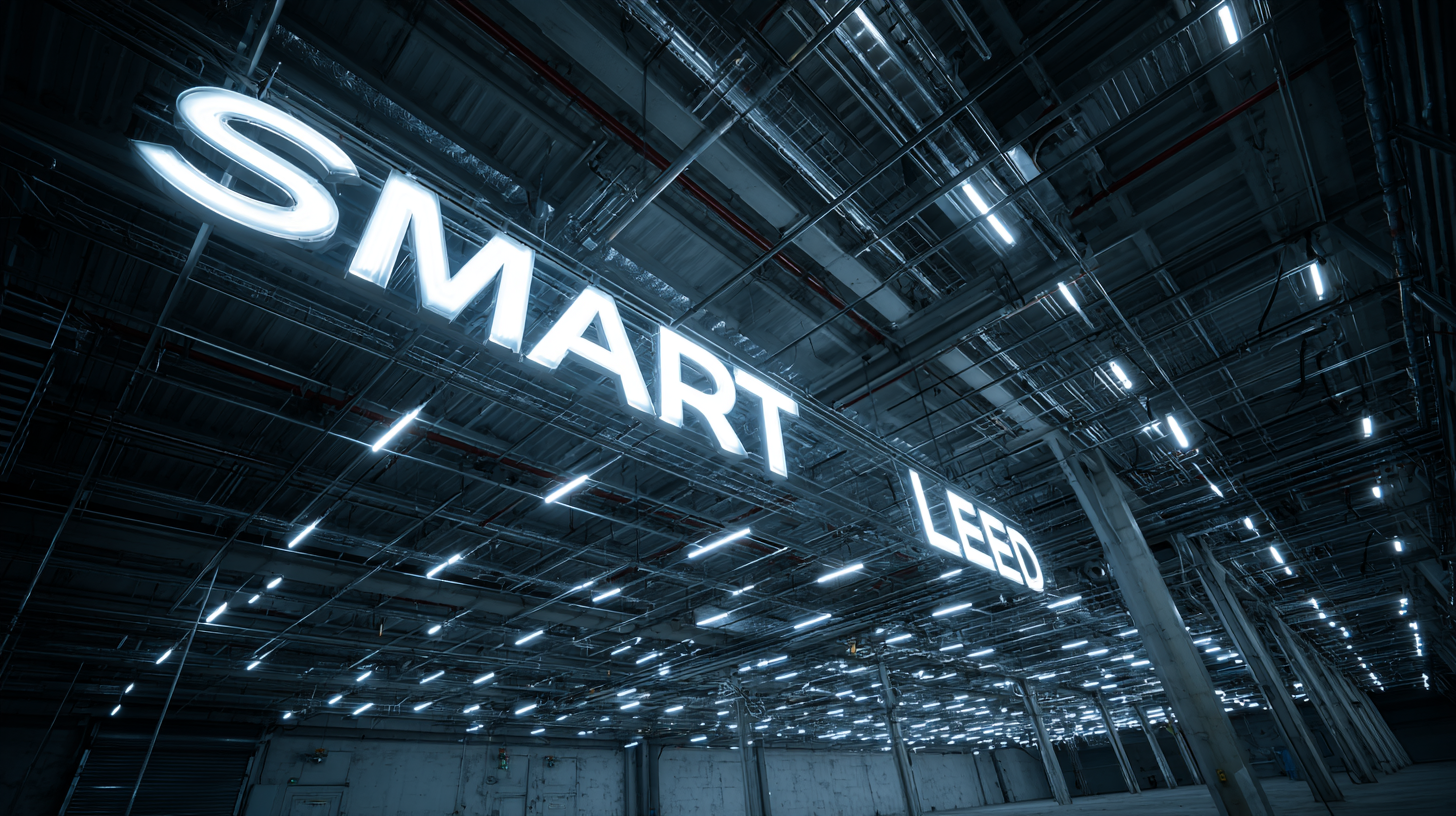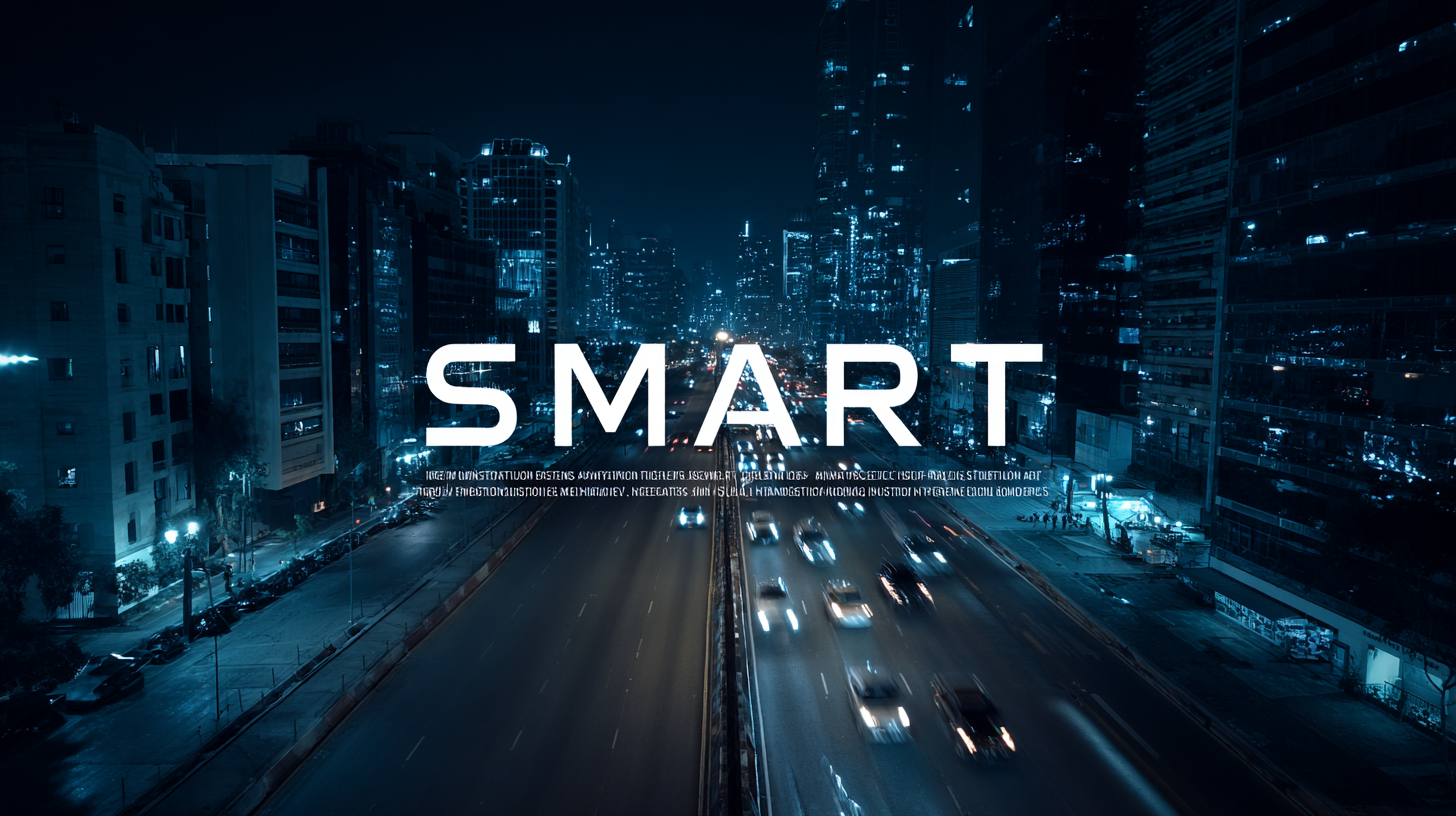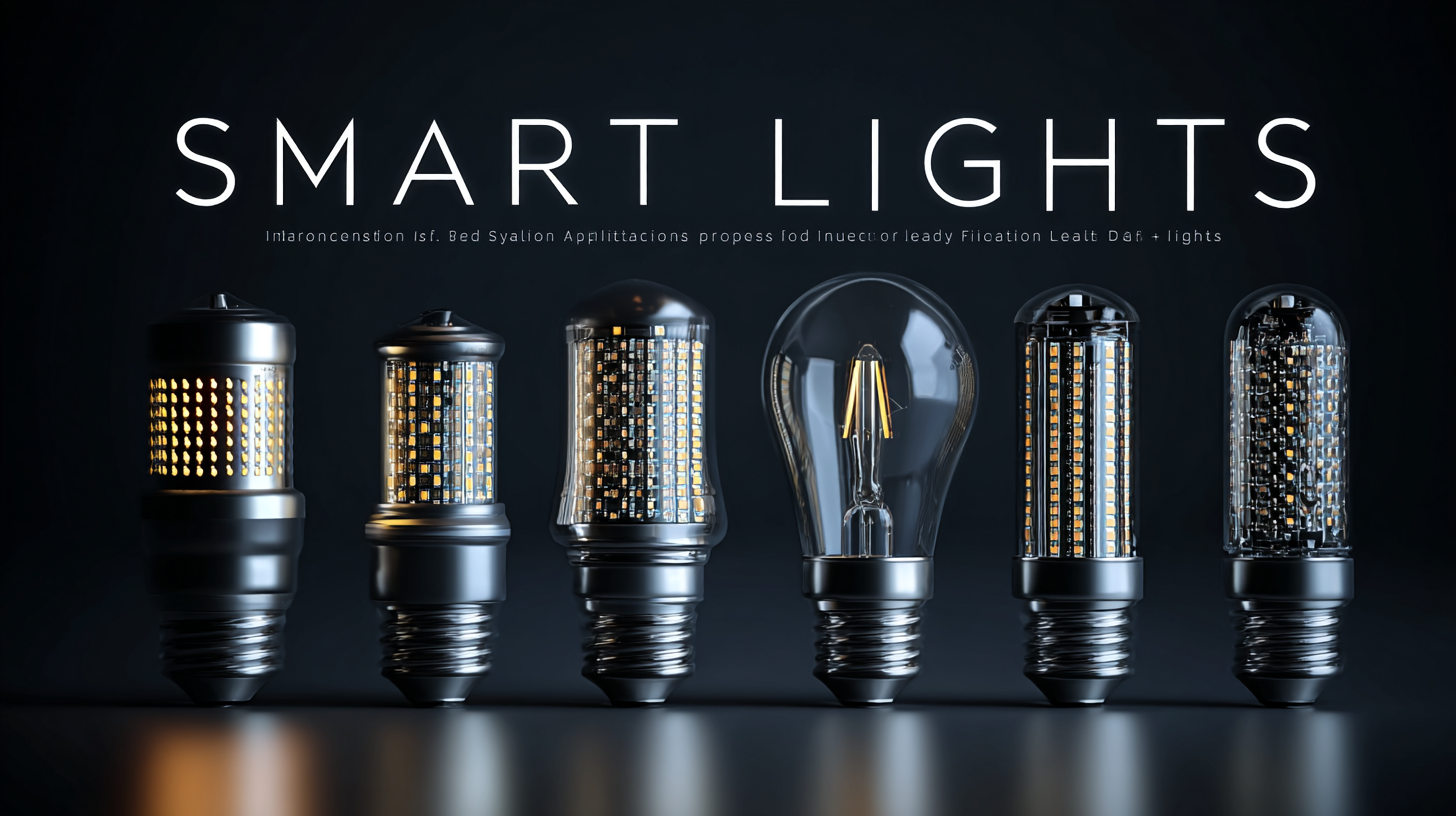Innovative Applications of Best Smart Led Light Fixtures Transforming Industries with Data Driven Insights
The advent of Smart Led Light Fixtures has revolutionized lighting solutions across various industries, driven by the growing reliance on data-driven insights. According to a recent report by the International Energy Agency, smart lighting systems can reduce energy consumption by up to 60% in commercial settings, underscoring the efficacy of these innovative technologies. Additionally, a report from MarketsandMarkets predicts that the smart lighting market will reach $75 billion by 2023, as businesses recognize the potential for enhanced operational efficiency and sustainability. By integrating sensors and IoT capabilities, Smart Led Light Fixtures not only optimize energy usage but also facilitate improved productivity and user experience. This blog aims to explore the transformative applications of these intelligent lighting systems, highlighting how they are reshaping industries through innovative solutions and actionable data insights.

Challenges in Current Smart LED Lighting Technologies
The challenges in current smart LED lighting technologies are significant, especially in the context of the rapidly evolving smart lighting industry. As the United States smart lighting market is projected to reach $118.4 billion by 2029, with an annual growth rate of 8.5% from 2024, the competition among manufacturers intensifies, demanding innovation and efficiency. A major hurdle is the integration of distributed wireless sensor networks that aim to reduce energy consumption. While these technologies promise enhanced user experience and connectivity, the complexity of implementation often leads to increased costs and technical barriers that need addressing.
Moreover, as cities strive towards sustainable growth with ambitious goals for 2050, the pressure to adopt intelligent lighting solutions becomes even more pronounced. The horticulture lighting market alone is expected to exceed $25 billion by 2031, driven by advancements in smart technologies. However, the challenge lies in efficiently customizing and retrofitting existing systems to incorporate these innovations without significant disruption. As enterprises and municipalities alike seek to embrace the benefits of smart lighting, the quest for reliable, scalable solutions that can seamlessly integrate with existing infrastructures continues to be a focal point for the industry.

Impact of Data Analytics on Smart LED Fixture Performance
The integration of data analytics into smart LED light fixtures has revolutionized the way industries manage energy consumption and enhance operational efficiency. By leveraging data-driven insights, businesses can monitor real-time energy usage, assess fixture performance, and identify patterns that inform smarter lighting solutions. This not only reduces energy costs but also minimizes the environmental impact, aligning with sustainability goals.
Moreover, the ability to analyze data generated by smart LED systems offers businesses a unique opportunity to enhance workplace productivity. For instance, fine-tuning lighting conditions based on occupancy patterns or specific tasks can create a more comfortable and conducive environment for employees. In retail settings, data analytics can determine the optimal lighting for products, enhancing visual appeal and driving sales. As industries continue to embrace these innovative technologies, the role of data analytics will be crucial in optimizing the performance and effectiveness of smart LED fixtures across various applications.
Impact of Data Analytics on Smart LED Fixture Performance
This chart illustrates the performance improvement of smart LED fixtures across various industries due to data-driven insights. The data reflects the percentage increase in energy efficiency and cost savings from the implementation of advanced data analytics strategies.
Integration Issues with Existing Infrastructure in Various Industries
The integration of smart LED light fixtures into existing infrastructures presents significant challenges across various industries. A report by the International Energy Agency (IEA) highlights that while 70% of commercial buildings have deployed some form of lighting upgrade, only 30% of these have successfully integrated smart lighting solutions within their existing systems. This gap can lead to operational inefficiencies and underutilization of the advanced capabilities that smart technologies offer, such as data-driven insights for energy management.
Moreover, industries like manufacturing and retail face unique integration issues. For instance, a study by McKinsey & Company found that only 25% of factories have implemented IoT-enabled lighting systems primarily due to compatibility problems with legacy infrastructure. The inability to seamlessly assimilate smart lighting technologies can hinder the realization of their full potential—like optimizing energy consumption, enhancing safety, and improving productivity. Moreover, companies often overlook the necessity for a systematic approach to upgrade their infrastructure, leading to fragmented workflows and increased costs over time. Thus, addressing these integration challenges is paramount for leveraging the transformative benefits of smart lighting solutions.

User Experience Concerns with Smart LED Lighting Solutions
As the adoption of smart LED lighting solutions grows, user experience has emerged as a pivotal concern. Many consumers are drawn to smart lighting for its convenience and energy efficiency, yet they often find themselves overwhelmed by the complexity of managing these systems. Installation difficulties can deter users from fully embracing this technology. Furthermore, the integration with other smart home devices can be inconsistent, leading to frustration when users encounter compatibility issues or latency in response times.
In addition to technical hurdles, aesthetic preferences play a significant role in user satisfaction with smart LED fixtures. Many users seek customizable features that allow them to tailor lighting settings to their specific moods and activities. When the user interface is intuitive, it enhances the overall experience, enabling users to seamlessly adjust brightness, color, and scheduling. Companies that prioritize user-friendly designs and provide clear instructions are likely to resonate more with consumers, ultimately driving wider acceptance and satisfaction in the marketplace. Balancing functionality with ease of use will be essential as the smart lighting industry continues to evolve.
Innovative Applications of Best Smart Led Light Fixtures Transforming Industries with Data Driven Insights - User Experience Concerns with Smart LED Lighting Solutions
| Industry | Smart LED Application | Impact on User Experience | Data-Driven Insights |
|---|---|---|---|
| Retail | Dynamic Lighting Adjustments | Enhanced Navigation and Shopping Experience | Heatmaps of Customer Movement |
| Healthcare | Mood Lighting in Patient Rooms | Improved Patient Mood and Comfort | Feedback Surveys on Room Lighting |
| Hospitality | Smart Room Control Systems | Personalized Guest Experience | Guest Interaction Data |
| Education | Adaptive Classroom Lighting | Increased Focus and Learning Efficiency | Performance Metrics in Different Lighting |
| Office Space | Automated Daylight Harvesting | Reduced Eye Strain and Better Productivity | Employee Satisfaction Surveys |
Environmental and Energy Efficiency Challenges in Smart Lighting Applications
The rise of smart LED light fixtures has introduced significant advancements in energy efficiency, yet it also poses environmental challenges that warrant careful consideration. As industries embrace data-driven insights to optimize lighting systems, the push towards sustainability becomes paramount. Traditional lighting systems consume vast amounts of energy, contributing to greenhouse gas emissions. Smart lighting, however, allows for precise control over usage patterns, enabling businesses to minimize their energy footprint while adapting to real-time conditions.
Despite these benefits, the challenge lies in the sustainability of the materials used in smart lighting technology and the energy consumed during its production and disposal. Companies must navigate the intricate balance between cutting-edge innovation and environmental responsibility. Solutions include employing recyclable materials, enhancing the longevity of products, and leveraging renewable energy during manufacturing processes. As smart lighting technology continues to evolve, addressing these environmental concerns will be critical for fostering a more sustainable future, ultimately leading to smarter choices that benefit both industries and the planet.
